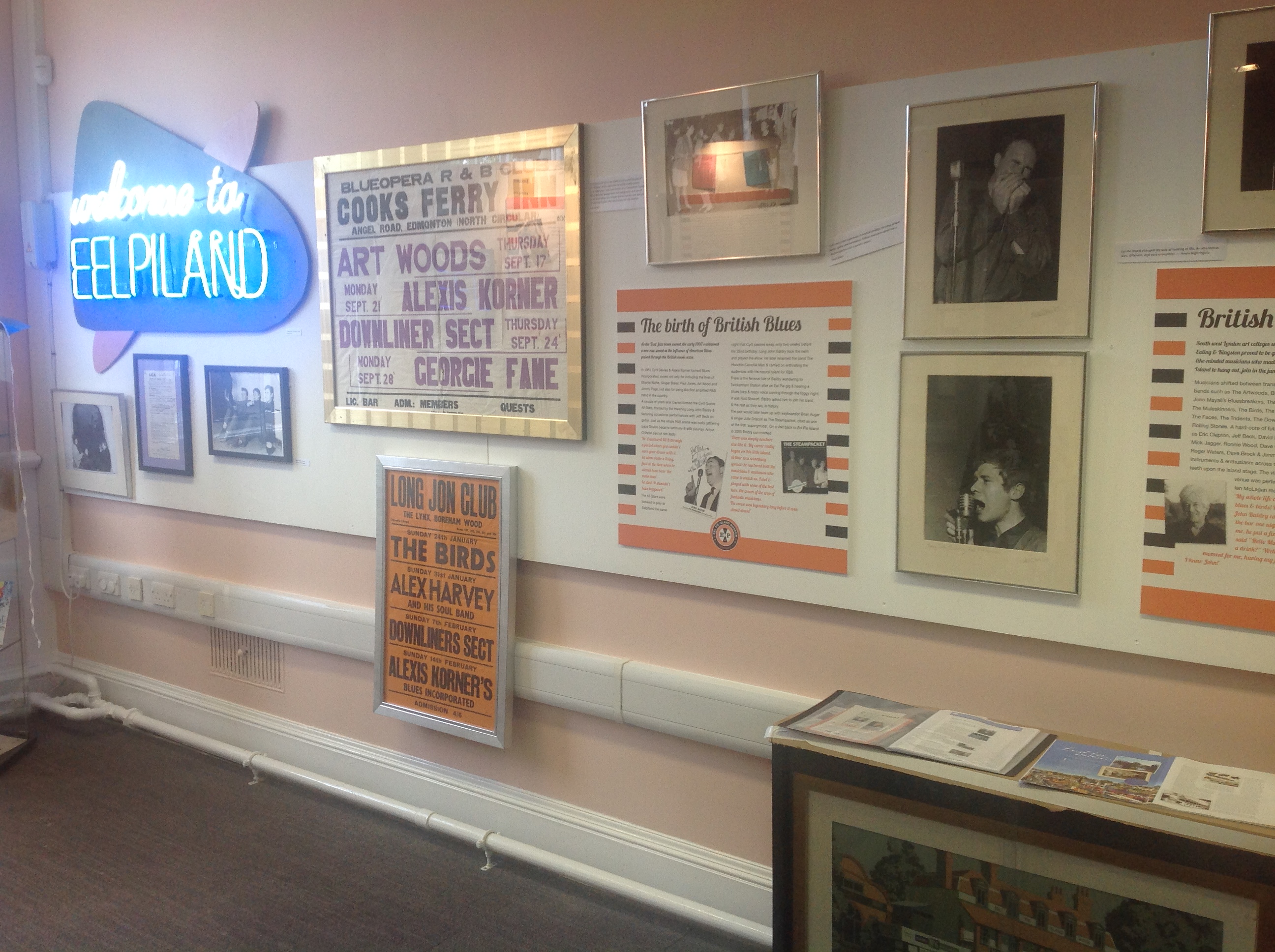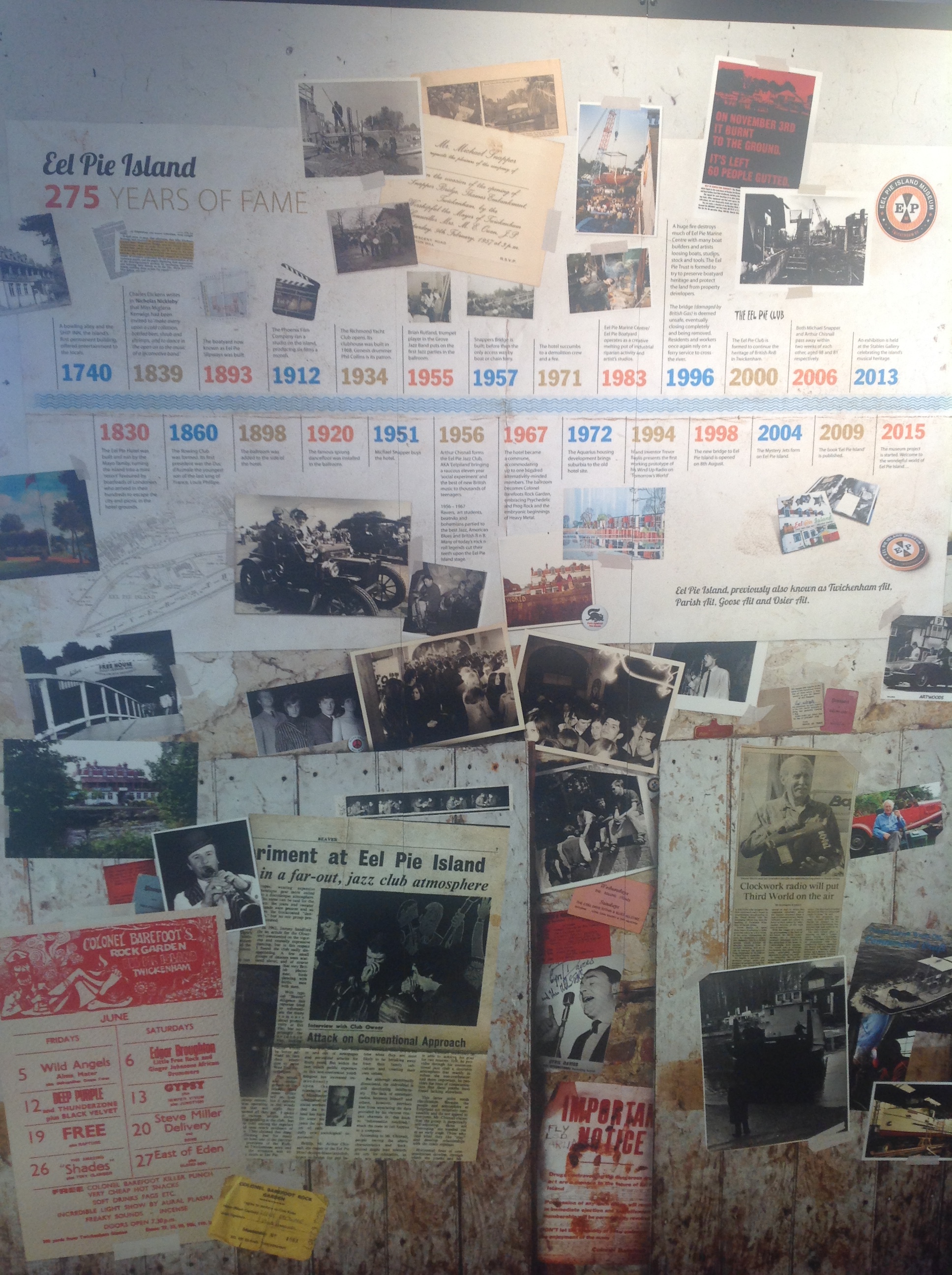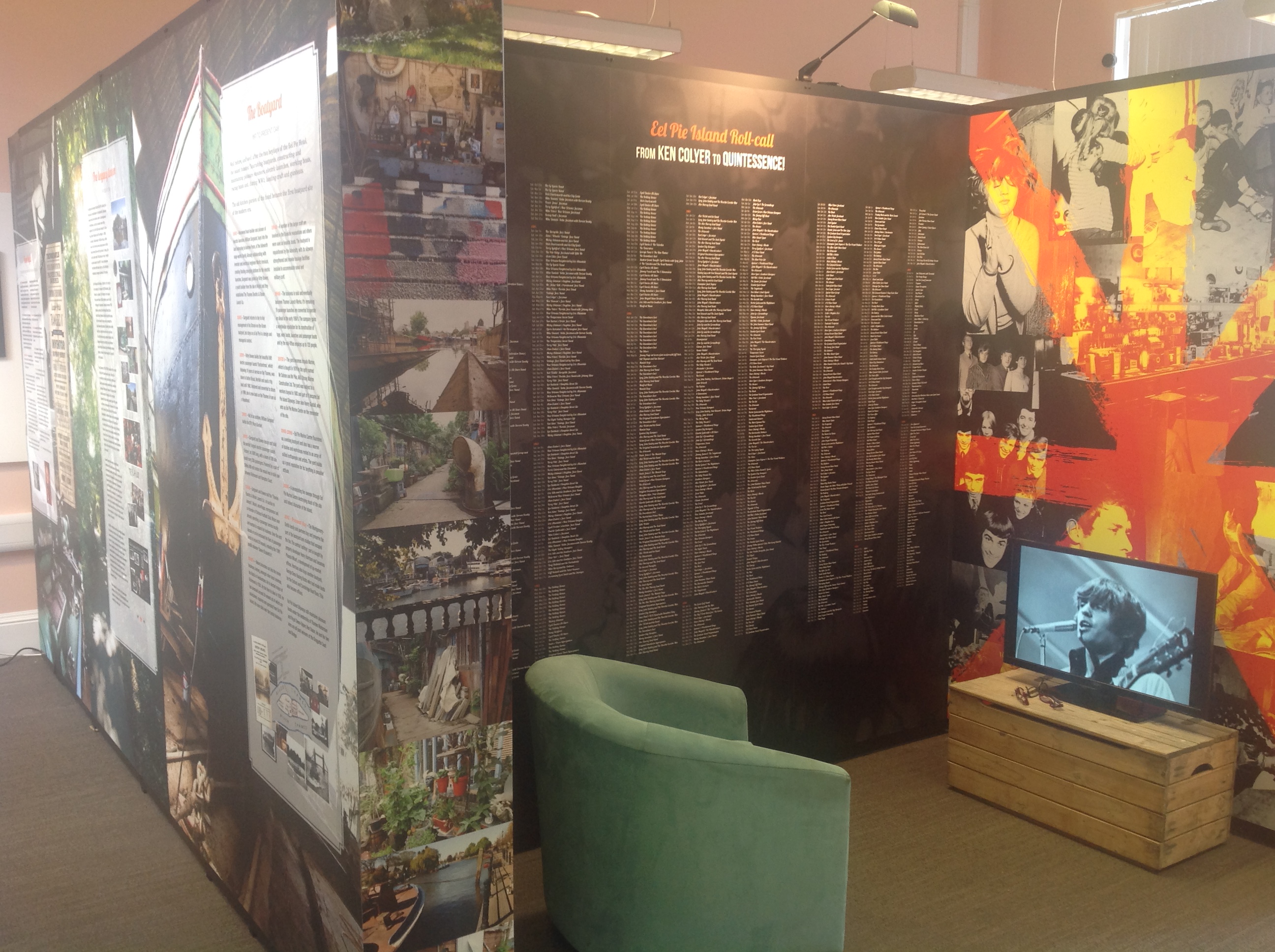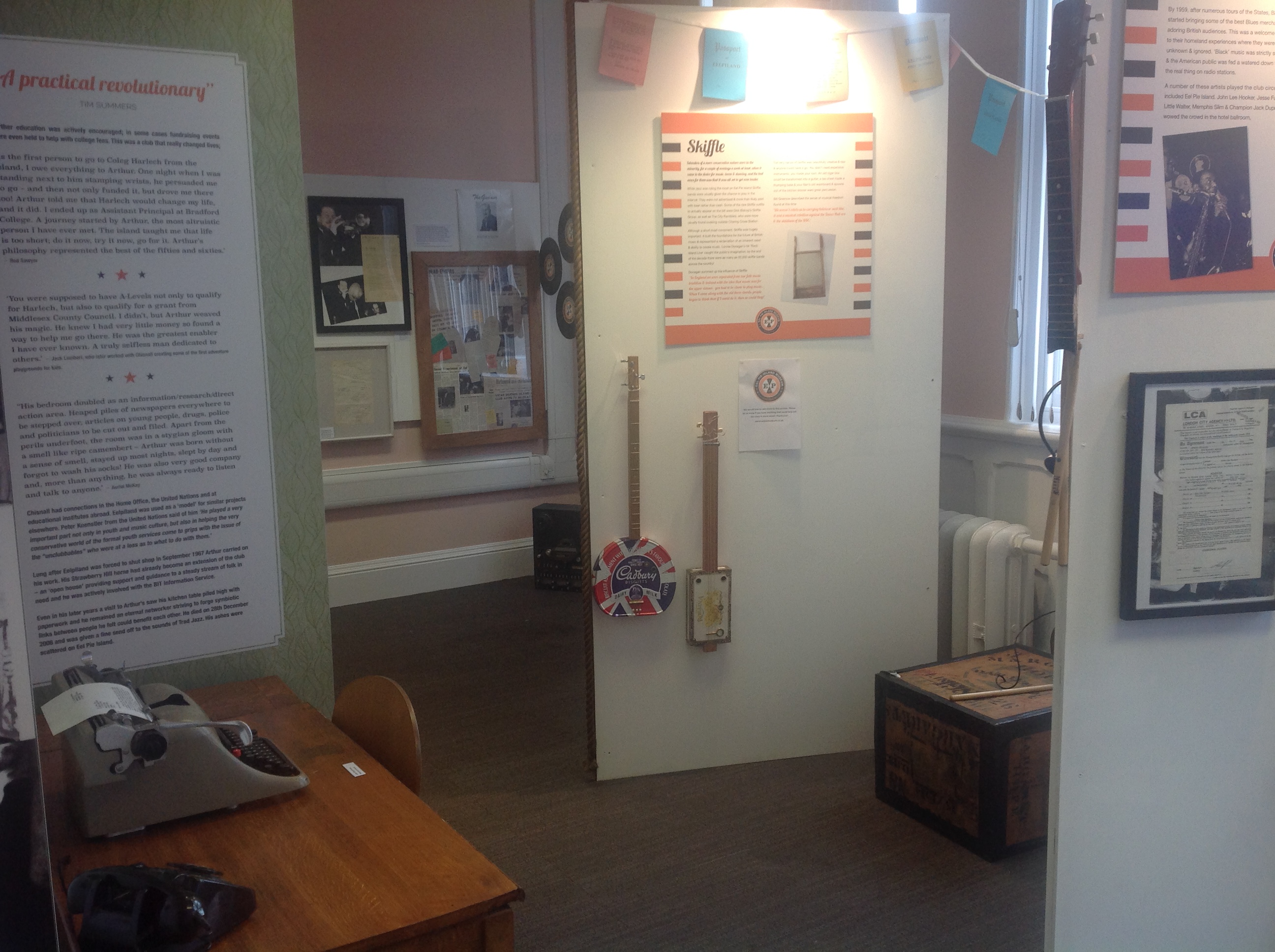A visit to Eel Pie Museum which is now at Twickenham Library
Eel Pie Island has long been an important part of the cultural history of the borough, with this reputation built up mainly due to its important musical history. Alongside this the island has been home to a variety business, as well as several famous residents. Local historian Michelle Whitby has been studying the location for many years, and during that time has built up a large collection of stories and memorabilia associated with its past.

She has now created Eel Pie Museum from this collection; highlighting the unique location, its important role in the UK’s musical landscape and the diverse nature of the island itself. From now until October the Museum will be operating from Twickenham Library where it has taken over two of the upstairs rooms; one for the display and another for the gift shop / information centre. After October it is hoped that a larger, permanent home for the Museum can be found to allow even more of the collection to be displayed.

The main display has been created using a selection of large boards to divide up the space. Each board contains information about Eel Pie Island, its residents and its history. Although a large part of the display focuses on its musical history, attention is paid to its boat building tradition which Michelle believes was crucial to the trajectory the island’s development took; it stopped it from becoming a purely residential area and thus allowed its musical scene to flourish.
Attention is also paid to its famous residents, particularly inventor Trevor Baylis. Indeed one of the many objects on display is an original wind-up radio he invented to allow those people in Africa, who were without access to electricity, to access information.

The majority of the display is focused on the Eel Pie Island musical scene though, and highlights not just the most famous bands to have played there – such as the Rolling Stones, The Who, Hawkwind, Genesis and Black Sabbath – but also the different musical traditions that made it such an interesting destination. These traditions included Trad-Jazz, Skiffle, British Blues, Heavy Metal and Rock with objects and information highlighting the islands role in their respective scenes, alongside explorations of some of their major players.

The museum will be open until the end of October and its opening hours are: Monday 13.00-18.30, Thursday and Friday 11.00-17.30, Saturday 11.00-15.30, and Sunday 13.00-16.30. Admission costs £2 for adults but is free for under 16s. More information can be found at: www.eelpiemuseum.co.uk
